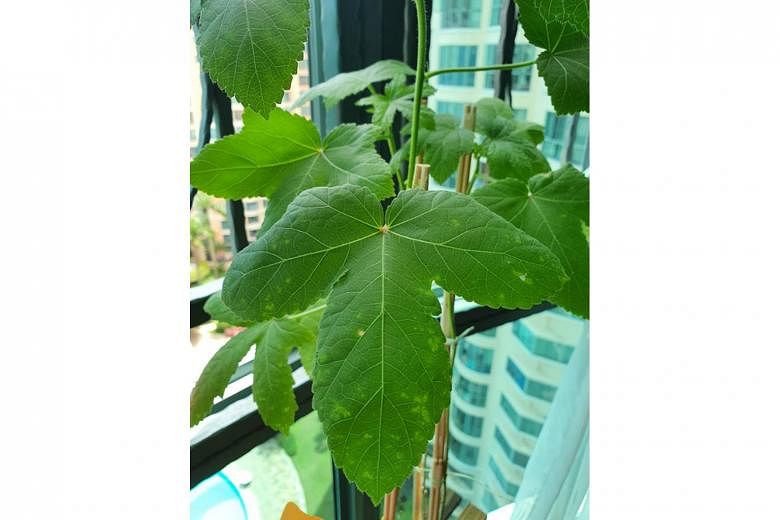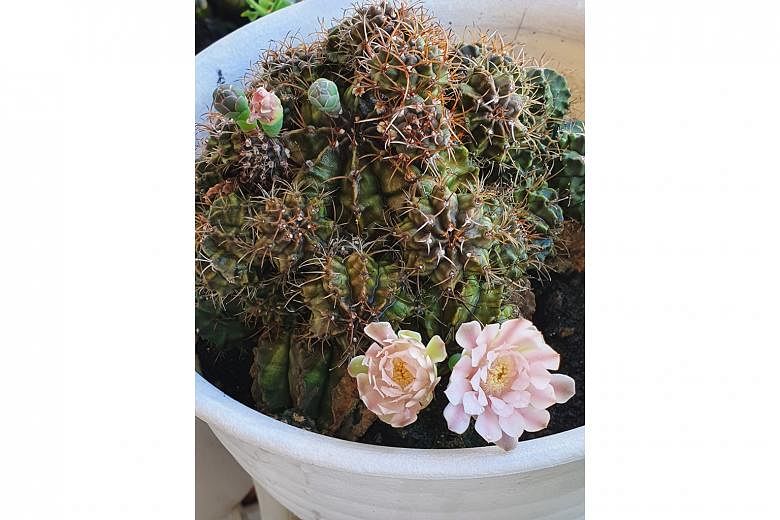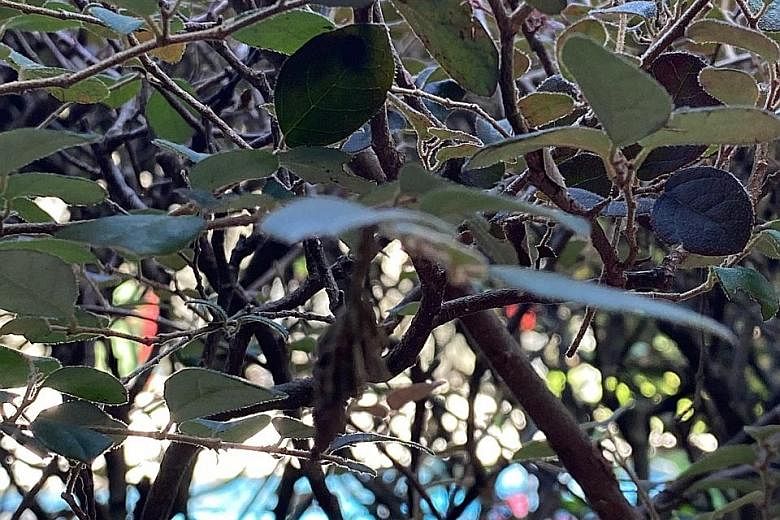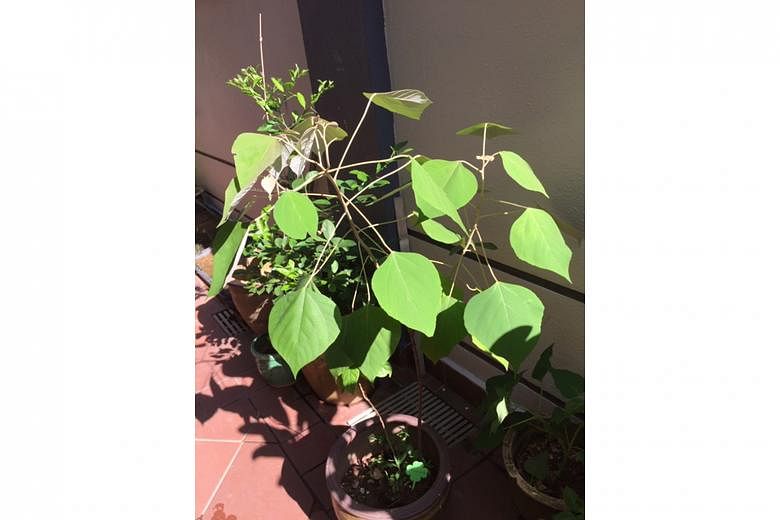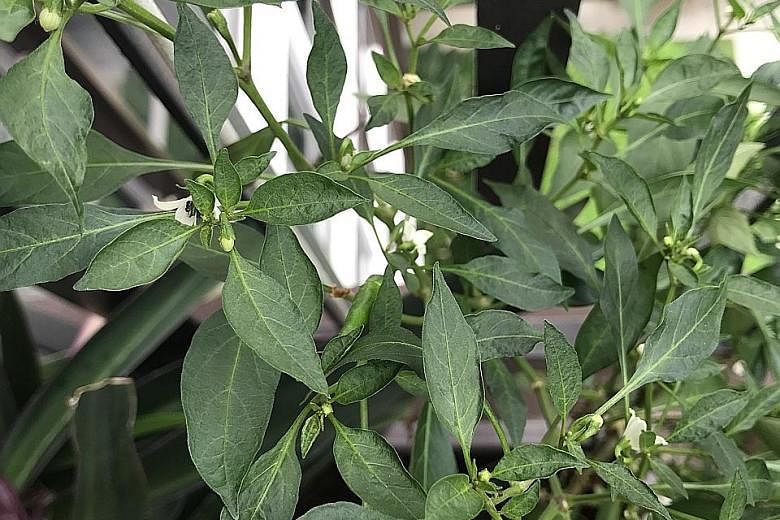Lady's finger plant may have downy mildew
I have a lady's finger plant and, recently, it stopped growing. On closer inspection, I noticed these white spots. What should I do with the plant?
Alicia Yeo
The leaves of your lady's finger plant are likely to have been infected by a disease called downy mildew.
It is a common disease in this plant that occurs during rainy weather, where sunlight is lacking and the environment is moist and humid. A lack of air circulation and plants being put close together also increase the incidence of disease.
Prevention is better than cure. Prune badly infected leaves. Organic fungicides such as Bordeaux mixture - a copper-based compound - can provide some control as it can be sprayed on leaves for a layer of protection.
Some gardeners report that baking soda solution can work too.
Test these fungicides on a small part of a leaf before spraying the entire plant to ensure it does not react adversely to the treatment.
Gymnocalycium cactus thrives in tropical climate
I have had this pot of cactus for more than 10 years. What is its name?
Richard Lim
The cactus is known via its botanical name, Gymnocalycium anisitsii ssp. damsii.
This particular cactus species is quite easy to grow and adapts to Singapore's hot, tropical climate. It needs to be watered regularly and does well under filtered sunlight.
Like most cacti, it should be grown using a well-draining growing media.
Pest is the young of bagworm moths
I have bushy plants bordering my condominium unit. Recently, I noticed a number of small leafy bags where I discovered worm-like insects living in them. I picked them off, but over a few days, they multiplied. What are they and how should I eradicate them? Are they are dangerous and will they kill the plants? How should I prevent such infestations in future?
Chew-Ping Cheah
The pests are likely caterpillars of the bagworm moth. The larvae are enclosed in a bag constructed from plant material. In large numbers, they can cause mostly aesthetic damage to plants, but rarely setting back or killing the host plant.
To manage their populations, you can use an organic, selective pesticide called Dipel. It is based on Bacillus thuringiensis ssp. kurstaki, which kills young caterpillars, and must be reapplied when it rains because the pesticide gets washed away.
Broad-spectrum pesticides like abamectin may also be used as they are more persistent, but are toxic to non-targeted organisms in the garden.
Turn-in-the-wind plant a short-lived tree
This plant grew in my garden pot. What is it and should I keep or discard it? Does it flower or fruit?
Alan Ang
The plant is commonly called turn-in-the-wind and its botanical name is Mallotus paniculatus. It is a short-lived tree that features leaves with a bronzy-white underside. It is a very common tree at the secondary forest edges in Singapore.
Plant with white flowers likely a chilli plant
I sowed the seeds of different plants in my pot and now, I do not know what this plant is. Its flowers are white. Can you help identify my plant?
Yap Poh Keng
The plant that grew in your pot is likely a chilli plant.
It is a good habit as a gardener to document what you have sown so that you are able to keep track of the seedlings that germinate.
• Answers by Dr Wilson Wong, an NParks-certified practising horticulturist, parks manager and ISA-certified arborist. He is the founder of Green Culture Singapore and an adjunct assistant professor (Food Science & Technology) at the National University of Singapore.
• Have a gardening query? E-mail it with clear, high-resolution pictures of at least 1MB, if any, and your full name to stlife@ sph.com.sg. We reserve the right to edit and reject questions.
